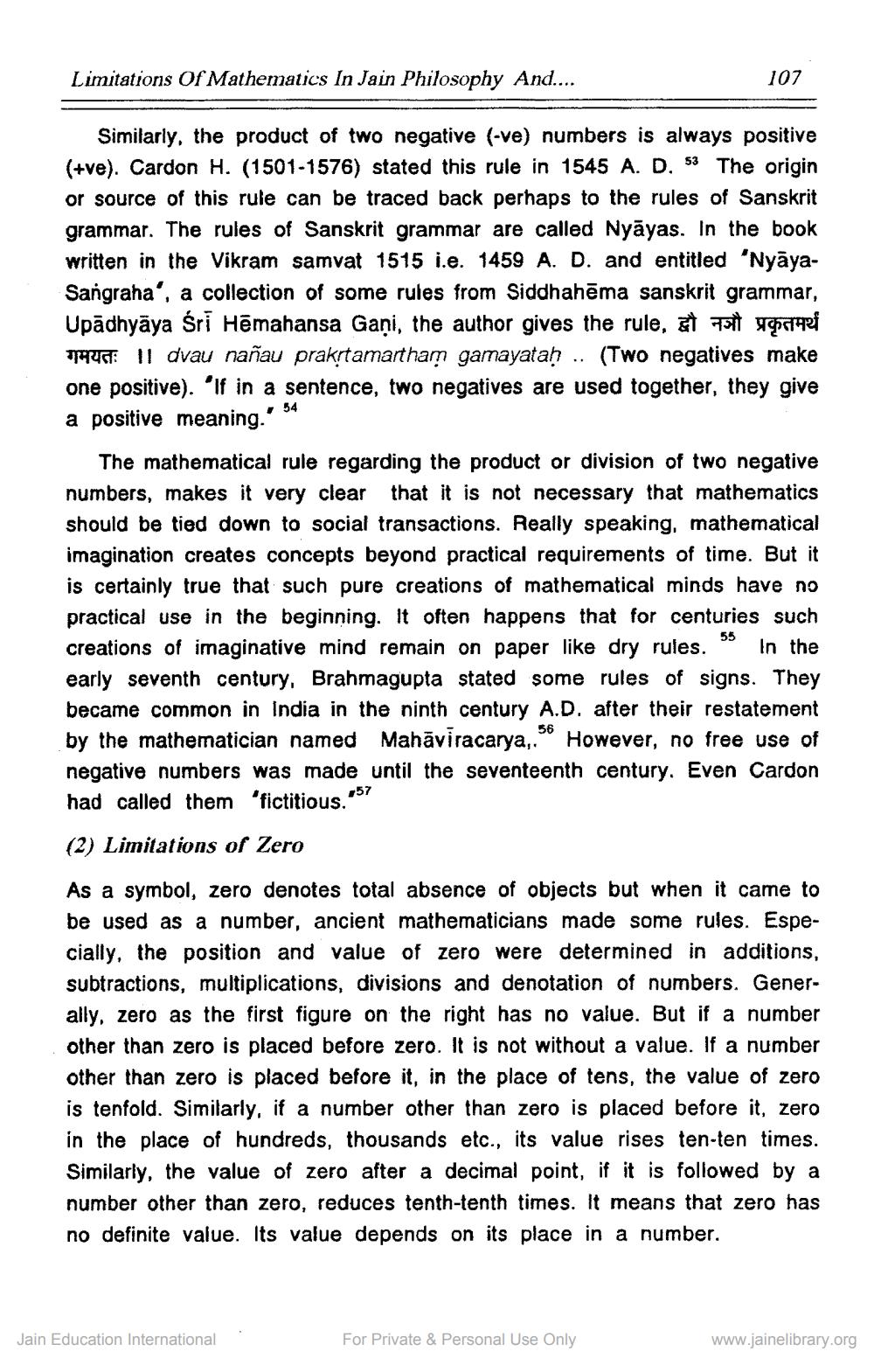________________
Limitations of Mathematics In Jain Philosophy And....
107
Similarly, the product of two negative (-ve) numbers is always positive (+ve). Cardon H. (1501-1576) stated this rule in 1545 A. D. 53 The origin or source of this rule can be traced back perhaps to the rules of Sanskrit grammar. The rules of Sanskrit grammar are called Nyāyas. In the book written in the Vikram samvat 1515 i.e. 1459 A. D. and entitled 'NyāyaSangraha', a collection of some rules from Siddhahēma sanskrit grammar, Upādhyāya Śri Hēmahansa Gani, the author gives the rule, et 731 THUG 11 dvau nanau prakrtamartham gamayatah .. (Two negatives make one positive). 'if in a sentence, two negatives are used together, they give a positive meaning." **
The mathematical rule regarding the product or division of two negative numbers, makes it very clear that it is not necessary that mathematics should be tied down to social transactions. Really speaking, mathematical imagination creates concepts beyond practical requirements of time. But it is certainly true that such pure creations of mathematical minds have no practical use in the beginning. It often happens that for centuries such creations of imaginative mind remain on paper like dry rules. In the early seventh century. Brahmagupta stated some rules of signs. They became common in India in the ninth century A.D. after their restatement by the mathematician named Mahāviracarya,. However, no free use of negative numbers was made until the seventeenth century. Even Cardon had called them "fictitious." (2) Limitations of Zero As a symbol, zero denotes total absence of objects but when it came to be used as a number, ancient mathematicians made some rules. Especially, the position and value of zero were determined in additions, subtractions, multiplications, divisions and denotation of numbers. Generally, zero as the first figure on the right has no value. But if a number other than zero is placed before zero. It is not without a value. If a number other than zero is placed before it, in the place of tens, the value of zero is tenfold. Similarly, if a number other than zero is placed before it, zero in the place of hundreds, thousands etc., its value rises ten-ten times. Similarly, the value of zero after a decimal point, if it is followed by a number other than zero, reduces tenth-tenth times. It means that zero has no definite value. Its value depends on its place in a number.
Jain Education International
For Private & Personal Use Only
www.jainelibrary.org




